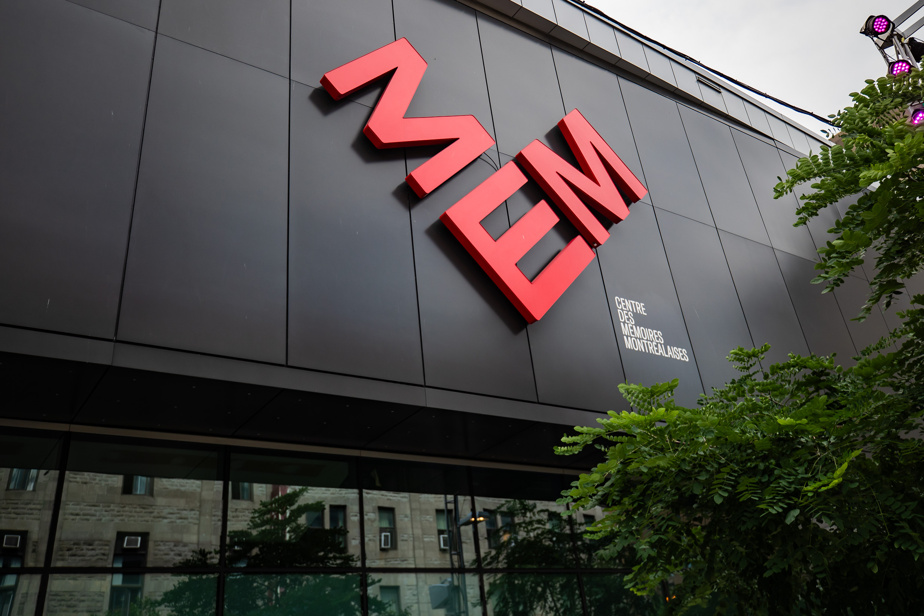Who is Montreal?
People from all walks of life

PHOTO MARIKA VACHON, THE PRESS
View of the exhibition MONTREALat the Montreal Memory Center
The exhibition answers this question by giving a voice to members of several communities that have woven the history of the metropolis, starting with the Indigenous peoples. The testimony of a Mohawk elder recounts the colonization of the territory from the point of view of those who suffered it. Further on, the interactive tour presents us with videos of Montrealers today: a family that has been in Quebec for 12 years, an Indigenous family and Guylain, a homeless person, invite us into their daily lives. “At the MEM, we have the mischievous pleasure of lifting our skirts! Of going to look in places where we perhaps look less,” explains Catherine Charlebois, section head and curator of the museum.
Traders

PHOTO MARIKA VACHON, THE PRESS
View of the exhibition MONTREALat the Montreal Memory Center
Montreal is rich in local industries that have left their mark on the province and internationally. The museum pays tribute to these great Montreal merchant families by exhibiting a diverse range of products from the city, such as Catelli pasta, Redpath sugar and, of course, Molson beer. “In our pantries, we have lots of pieces of Montreal history,” adds Mme Charlebois. A section is dedicated to Quebec products resulting from crossbreeding, in which we find in particular a pot of Catelli baked beans and VH sauces.
Committed citizens

PHOTO MARIKA VACHON, THE PRESS
View of the exhibition MONTREALat the Montreal Memory Center
Public transportation, water distribution service and access to the river: Montreal is also several administrations that have succeeded one another to provide services to citizens. This large municipal machine is evoked using pipes, gears and pressure valves to form a timeline rehashing the history of the implementation of various services. The pressure valves represent citizen demands that have helped improve or create said services. A loudspeaker also allows us to hear Montrealers speaking to the City to make things change.
It’s you !

PHOTO MARIKA VACHON, THE PRESS
View of the exhibition MONTREALat the Montreal Memory Center
“There are as many responses as there are Montrealers and people from outside Montreal,” admits Mr.me Charlebois. Thus, at the end of the exhibition, those who wish to do so can in turn answer the two questions “Montreal, what is it? Who is it?” by drawing, writing or recording their voice. Their response is then broadcast or projected at the entrance to the exhibition, alongside quotes from the poet Gaston Miron and sketches by the surveyor Jean Bourbon, who designed the layout of Saint-Jean Street in Quebec City.
What is Montreal?
Moving

PHOTO MARIKA VACHON, THE PRESS
View of the exhibition MONTREALat the Montreal Memory Center
Keen to present the hidden sides of “Montrealities,” the museum is not afraid to evoke the taboo of the housing crisis that has been hitting the metropolis for several years. Expropriations, evictions, fires: cardboard boxes stacked on top of each other inform visitors about the reasons that force Montrealers to move. The thousand and one ways to live in an apartment are also highlighted thanks to the model of a plex seen from the outside, allowing us to observe what is happening through the windows.
From universal disorder

PHOTO MARIKA VACHON, THE PRESS
View of the exhibition MONTREALat the Montreal Memory Center
Without its 19 boroughs, Montreal would certainly not be the great “universal disorder” described by the poet Gaston Miron. From the Italian plex to the modern condo tower, the history of the emblematic architecture of certain neighbourhoods is evoked through models. Visitors can also sit on the edge of a bay window located at the key intersection of Sainte-Catherine Street and Saint-Laurent Boulevard, where the MEM is located. Books and audio content explore the history of these main arteries, from north to south and east to west, in a playful way.
Historic gatherings

PHOTO MARIKA VACHON, THE PRESS
View of the exhibition MONTREALat the Montreal Memory Center
A time machine brings to life before our eyes events etched in Montreal’s collective memory. This interactive installation transports us to the time of the Great Peace, Expo 67 and COVID-19 through archival videos, ingenious lighting effects and emblematic objects hanging on a wall.
Languages

PHOTO MARIKA VACHON, THE PRESS
View of the exhibition MONTREALat the Montreal Memory Center
Whether they are passing through or staying, travelers and newcomers bring their mother tongue with them when they arrive in Montreal, proudly recognizes M.me Charlebois. In an uninhibited manner, the exhibition paints a portrait of this plurality of languages that can be heard when walking through the city’s streets. From Franglais to Italianized English, including sign language and indigenous languages, visitors can discover the precise particularities of Montreal’s polyphony.
Visit the Montreal Memory Center website
